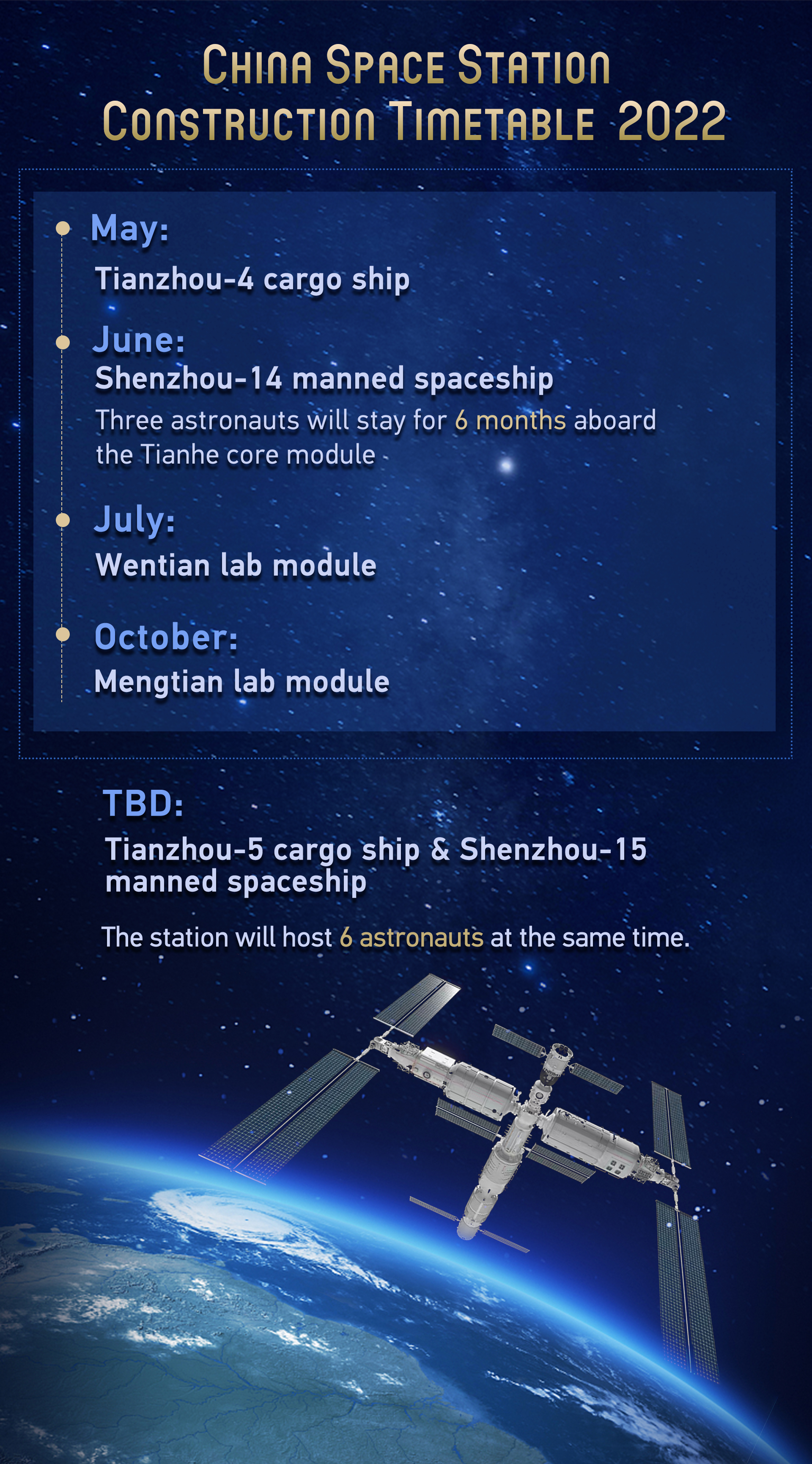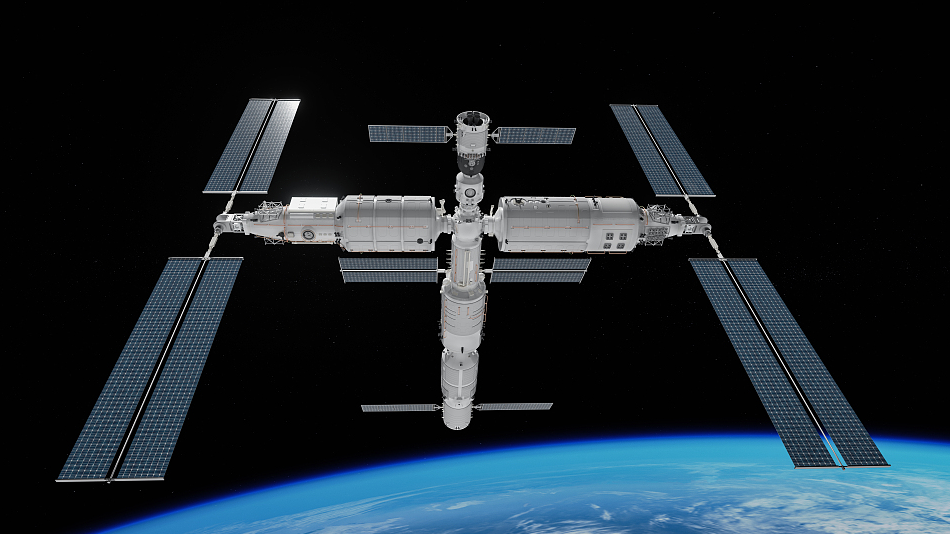
China Space Station construction timetable 2022. /CGTN graphic by Du Chenxin
China Space Station construction timetable 2022. /CGTN graphic by Du Chenxin
Six space flight missions will be carried out in 2022 to complete the in-orbit construction of China's space station, a Chinese space official said at a news conference on Sunday.
A Tianzhou-4 cargo spacecraft will be launched in May, said Hao Chun, director of the China Manned Space Engineering Office, followed by the Shenzhou-14 manned spacecraft in June, with three astronauts in the core module to be stationed in orbit for six months.
The Wentian lab module will dock with the Tianhe core module in July and the Mengtian lab module in October to complete the in-orbit construction of China's space station, forming a T-shaped complex once the construction of the space station is completed.
The Tianzhou-5 cargo spacecraft and the Shenzhou-15 manned spacecraft will then follow, taking another three astronauts to stay in orbit for six months.

A T-shaped complex will be formed once the space station's construction is completed. /CFP
A T-shaped complex will be formed once the space station's construction is completed. /CFP
The chief designer of the astronaut system for China's manned space project, Huang Weifen, told CGTN that the Shenzhou-14 and Shenzhou-15 crews are actively being trained for a series of missions, including the assembly and operation of different modules on the space station, robotic arms tests and extravehicular activities (EVAs).
The astronauts will perform EVAs through a dedicated airlock module. It will also be the first time the station hosts six astronauts at the same time for up to 10 days.
Hao said in the briefing that COVID-19 has not affected the construction timeline of China's space station.
China's first large space station telescope
During the briefing, director Hao Chun also said China plans to launch its first large Chinese Space Station Telescope (CSST), or Xuntian, meaning "survey to heavens" in English, in 2023.
This sophisticated device has a field of view 300 times greater than the Hubble Space Telescope while retaining a similar resolution.
With a huge 2.5-billion-pixel camera, Xuntian will be able to observe up to 40 percent of the sky over 10 years. It will also co-orbit Earth with the Chinese space station and periodically dock with the future crewed outpost.
Xuntian's mission as a space optical observatory also includes investigating the properties of dark matter and dark energy, the cosmos, galaxy formation and evolution.

